Install the app
How to install the app on iOS
Follow along with the video below to see how to install our site as a web app on your home screen.
Note: This feature may not be available in some browsers.
You are using an out of date browser. It may not display this or other websites correctly.
You should upgrade or use an alternative browser.
You should upgrade or use an alternative browser.
USA Pics
- Thread starter Dermmy
- Start date
Wow! Totally blown away! Those are absolutely amazing.
hiawathamr
DLC developer for Trainz
Branchline




Mainline










Cheers




Mainline










Cheers
deadpoolmx55
LETS GO PENS!
Rolling with recently refurbished twin-45 flats, one of the recently inaugurated Peregrine intermodal trains blasts westbound nearing Columbus, Ohio on its way to Chicago in 1984. Competition with highways is steep and ever growing, prompting the railroad to have to exert a higher focus on retaining its trailer traffic while adding containers to its portfolio. Newly branded, recently legalized nationwide 45ft trailers adorn their namesake trains - Peregrine started as simple branding to impress upon customers speedy service, but would later grow to be a subsidiary corporation for the railroads entry into RoadRailer just a few short years later. TOFC service became largely - though not totally - replaced by containers and a select amount of RoadRailer routes throughout the late 80s and 90s.

Local freights in the West Virginia Division were quite the hodgepodge. Intradivisional K801 has with it mostly cars that will end up in the handful of local industries along the division - even the big autoparts boxes have homes out this way. Sand, plastic pellets, ammonium nitrate, lumber, and more make up a typical job out this way. SLRR 3575 has all that well under control at CP Victory, near Grantsville, where it will soon begin an uphill slog on its journey south.

Autoparts traffic rapidly became one of the hot commodities for the railroad in its midwestern routes. Though hotly contested by the Wabash and later N&W, later still NS, the company got its fair share of auto traffic - especially after its 1976 purchase of the DT&I. SLRR 9109 trails second and shows signs of its DT&I heritage with its spark arrestors and distinct lack of dynamic brakes. Plenty of 86ft flat panel boxcars joined the roster on that acquisition (over 800!), though the SLRR still had its own orders out for more. A still clean 1977-delivered Class B90 boxcar from Greenville Steel is first out, with a dozen patched out DTI cars deeper in the train mixed in with other railroads cars. In later years, dedicated trains built from just 86 footers and a few 60 footers began to disappear as RoadRailer trains took up the just-in-time autoparts side of things and the oldest boxcars reached their end-of-life, leaving the big flat panels relegated to joining typical long manifests. Still, long lines of the giant boxcars have remained a mainstay from the 60s onwards, even to today, just a little less colourful and a little slower than they once were.

Cheers,
SM

Local freights in the West Virginia Division were quite the hodgepodge. Intradivisional K801 has with it mostly cars that will end up in the handful of local industries along the division - even the big autoparts boxes have homes out this way. Sand, plastic pellets, ammonium nitrate, lumber, and more make up a typical job out this way. SLRR 3575 has all that well under control at CP Victory, near Grantsville, where it will soon begin an uphill slog on its journey south.

Autoparts traffic rapidly became one of the hot commodities for the railroad in its midwestern routes. Though hotly contested by the Wabash and later N&W, later still NS, the company got its fair share of auto traffic - especially after its 1976 purchase of the DT&I. SLRR 9109 trails second and shows signs of its DT&I heritage with its spark arrestors and distinct lack of dynamic brakes. Plenty of 86ft flat panel boxcars joined the roster on that acquisition (over 800!), though the SLRR still had its own orders out for more. A still clean 1977-delivered Class B90 boxcar from Greenville Steel is first out, with a dozen patched out DTI cars deeper in the train mixed in with other railroads cars. In later years, dedicated trains built from just 86 footers and a few 60 footers began to disappear as RoadRailer trains took up the just-in-time autoparts side of things and the oldest boxcars reached their end-of-life, leaving the big flat panels relegated to joining typical long manifests. Still, long lines of the giant boxcars have remained a mainstay from the 60s onwards, even to today, just a little less colourful and a little slower than they once were.

Cheers,
SM
deadpoolmx55
LETS GO PENS!
Michaeleba
Member
I wish i still had Donner Pass Route. To bad its not available anymore. awesome screenshots!For the "uncle" Jango
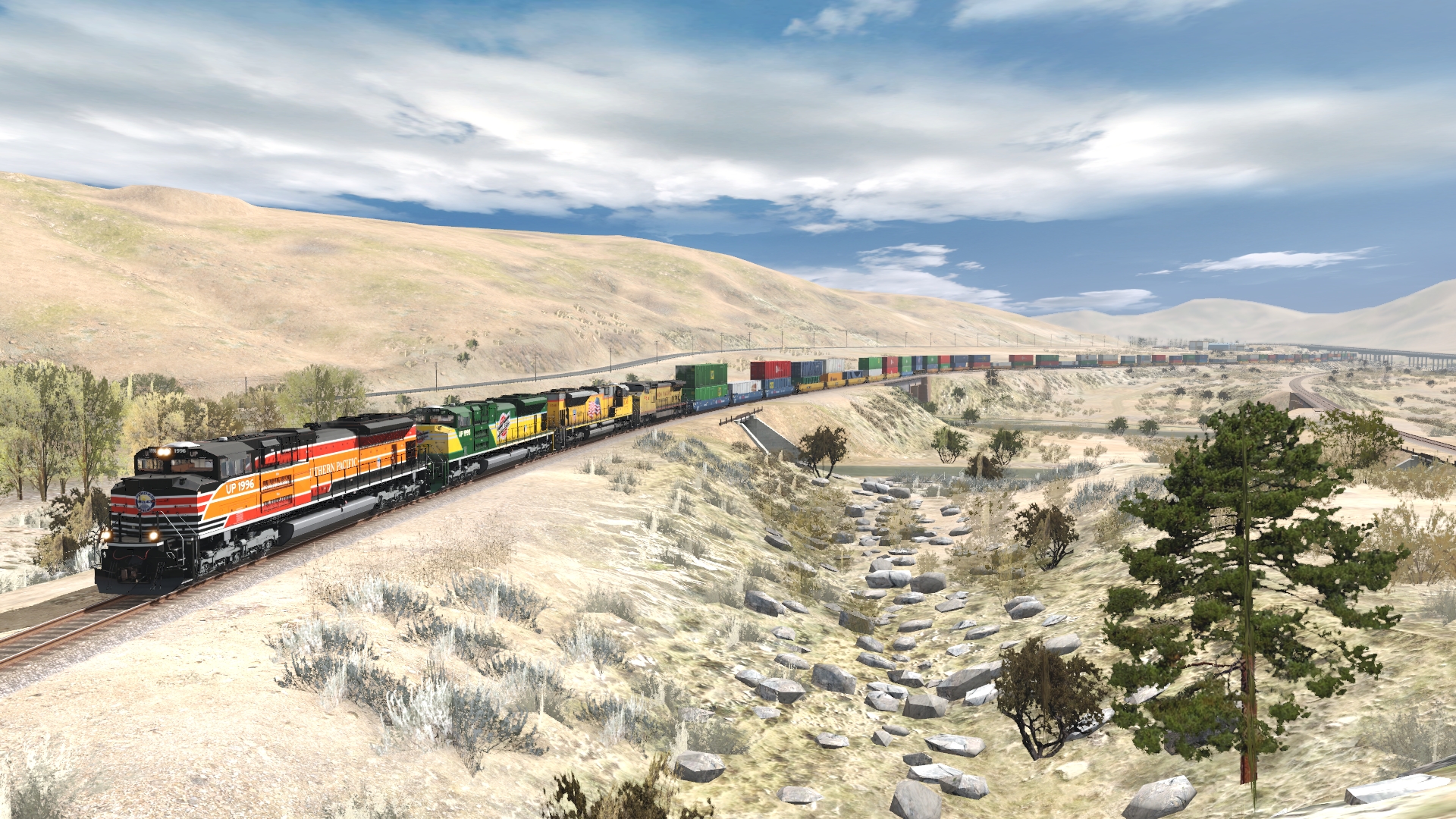

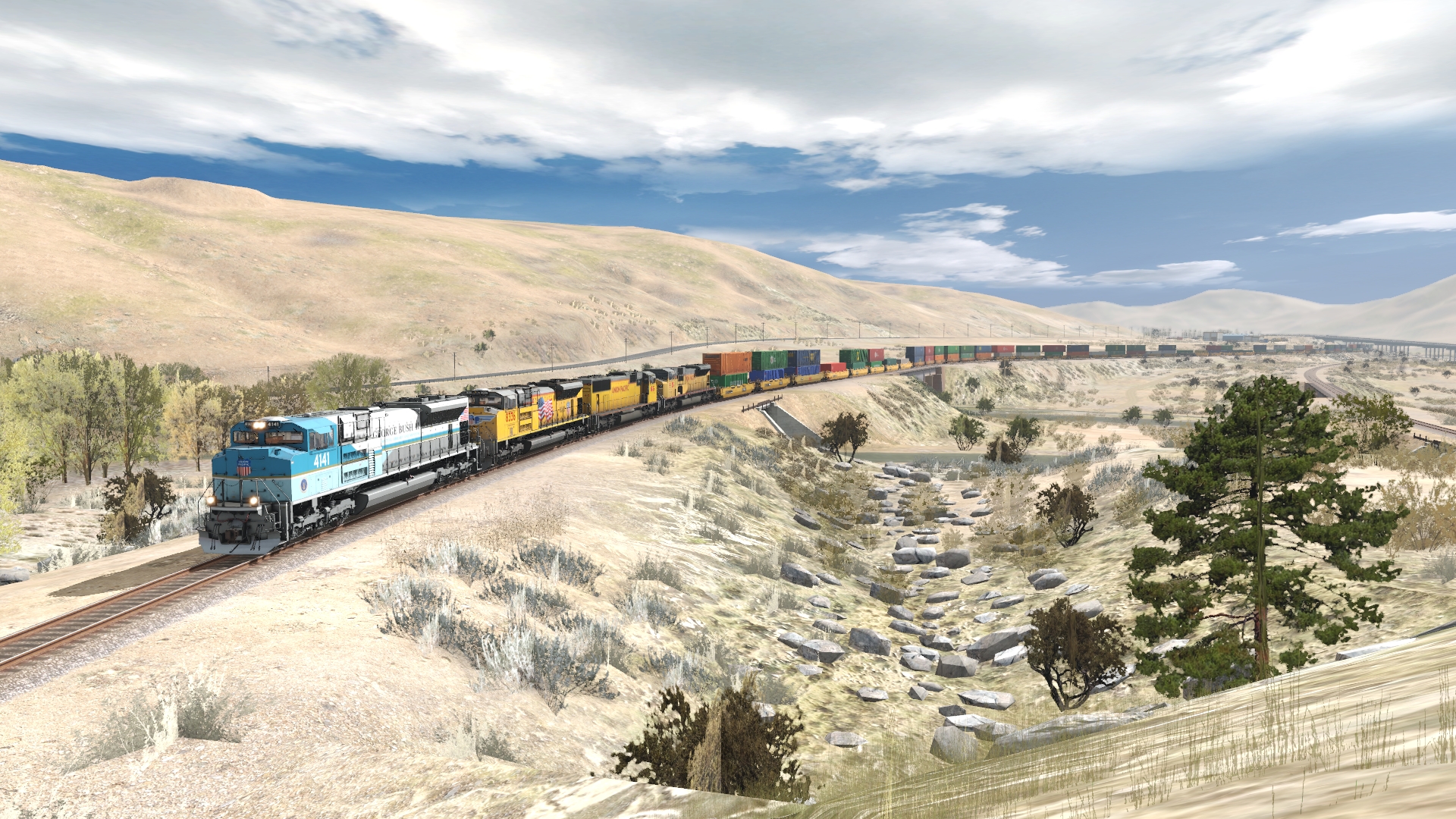
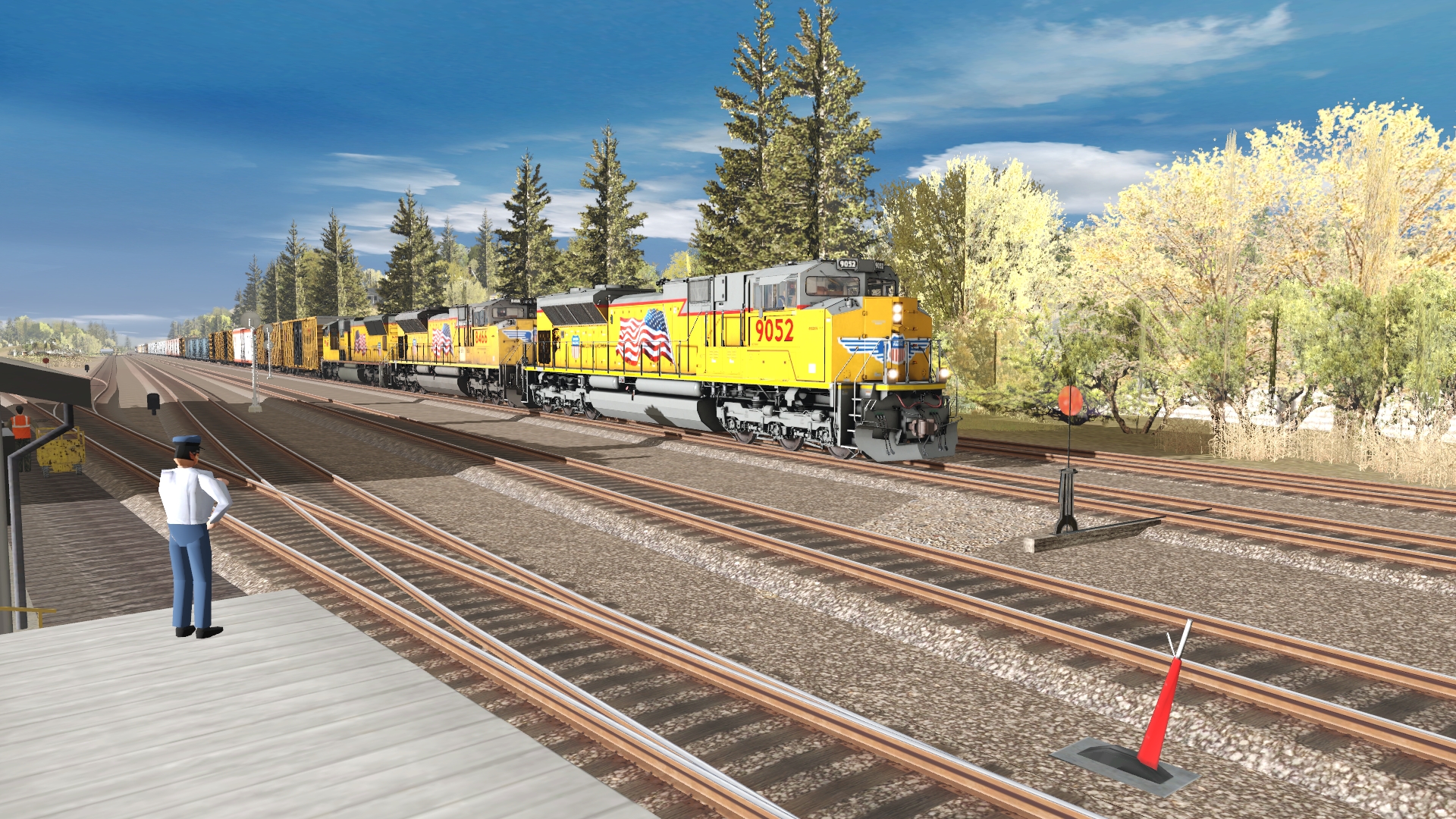
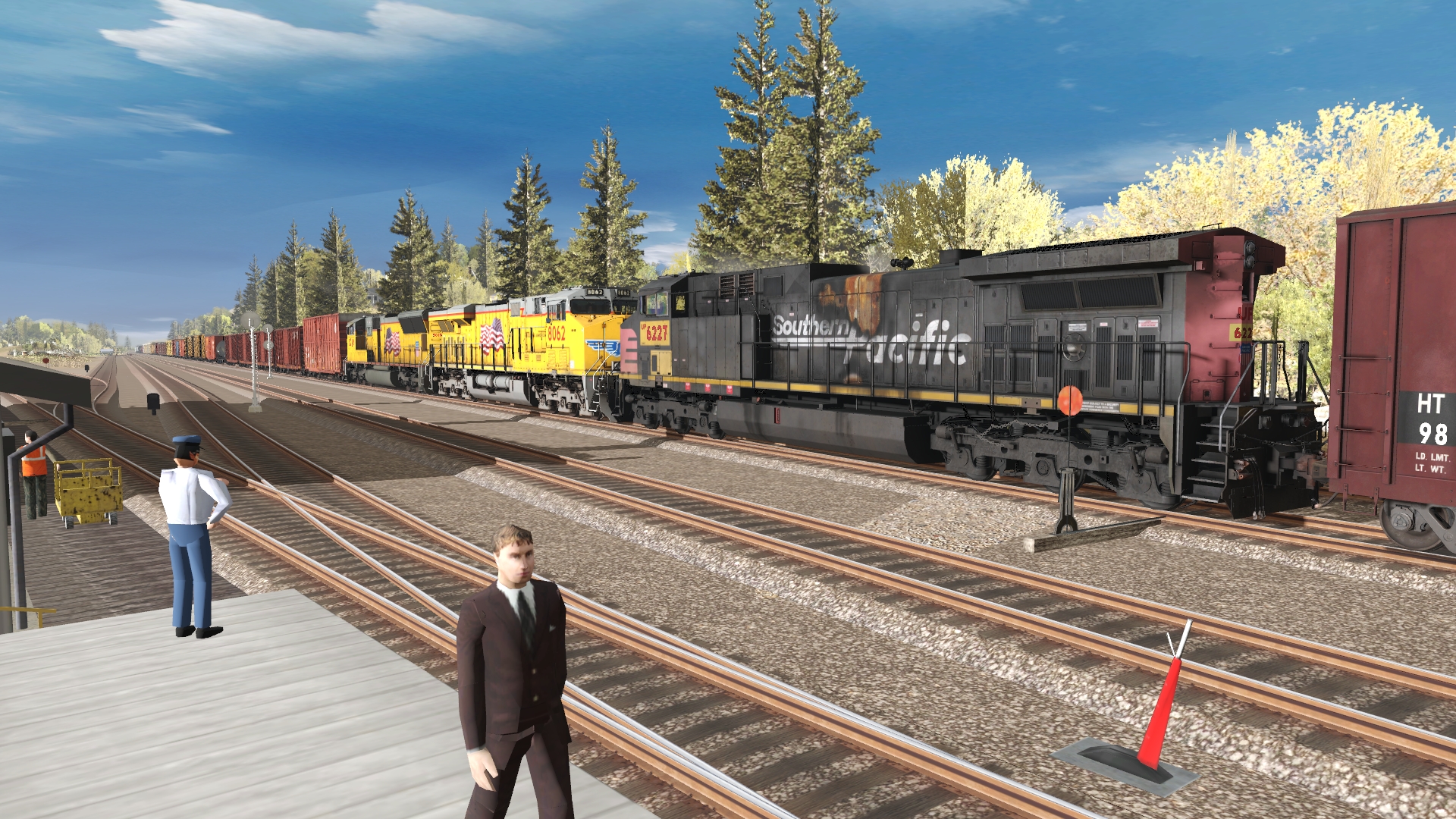
RetroRails12
Well-known member
Downtown Plymouth Michigan on the CSX Saginaw Sub Route (WIP By the way by me). Locomotive model is N8PHU on the DLS Sureshot28 did the reskin on the locomotive back in the 2012 days!! an oldie but a goodie!
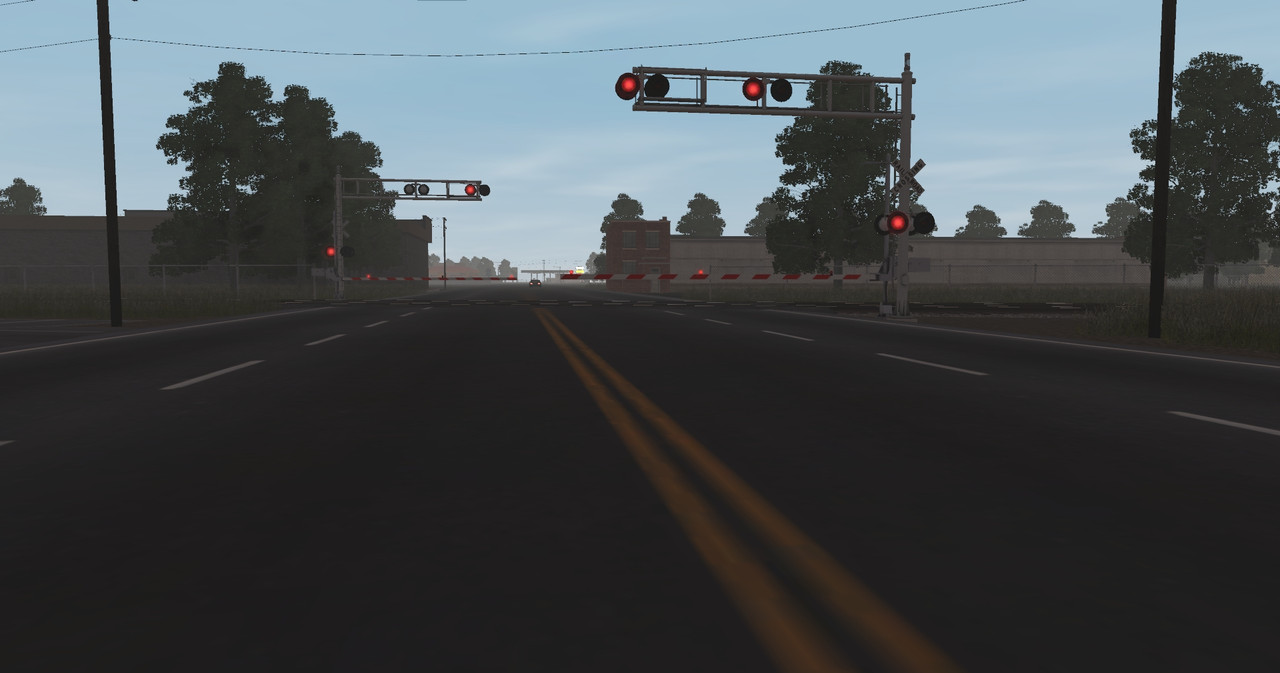
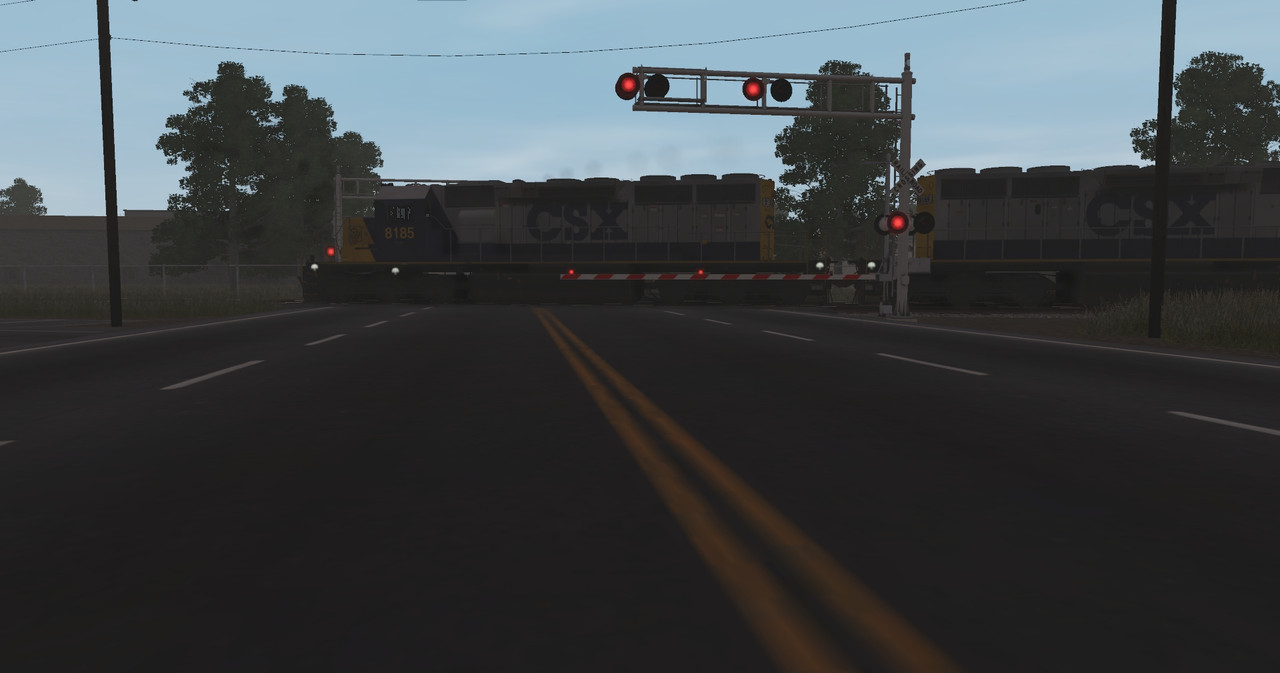


Last edited:
hiawathamr
DLC developer for Trainz









Cheers
Westbound L&EI loaded grain train 771 for Chicago splits the intermediates between Van Wert and Middle Point.

Train 334 rolls east through Wandle with 4025 leading at sunrise. This Fort Wayne-Canton manifest only has another couple miles before entering and terminating in Canton Yard.

Train 334 rolls east through Wandle with 4025 leading at sunrise. This Fort Wayne-Canton manifest only has another couple miles before entering and terminating in Canton Yard.

Intermodal/TOFC train 101 glides westbound through Mansfield on a humid summer evening. The Canton crew will cruise all the way to Fort Wayne with little to no disruptions being one of the hottest trains on the railroad. In FW, the Canton crew will go to their hotel, and the first out FW crew will take 101 the rest of the way into Chicago through the night.

hiawathamr
DLC developer for Trainz
UP main:




















hiawathamr
DLC developer for Trainz
UP branch:






















hiawathamr
DLC developer for Trainz
Other pics:








I take too many screenshots....
Cheers








I take too many screenshots....
Cheers
Similar threads
- Replies
- 6
- Views
- 946


































